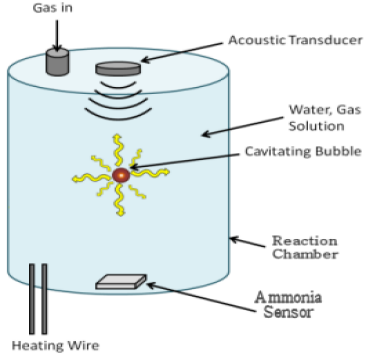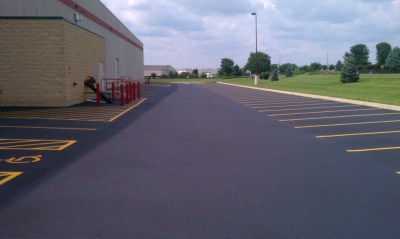Last week we challenged you to post your idea on environment-related solutions for the 2015 Hackaday Prize. We’ve gone through every entry and have chosen this week’s winners. What a tough process, there are so many interesting ideas to consider that we’ve done a round-up of some that held our attention.

Energy Saving
Conservation was at the center of these projects and [Peter Walsh] is thinking large scale to improve the Bosch-Haber process. This process is used as a source of nitrogen for fertilizers and consumes 1% of all energy worldwide. Even small efficiency advances could have a huge effect.
From profound to whimsical, [TomaCzar] has an alarming solution to leaving the lights on. We enjoy his preamble about his family moving to Earth from a planet with unlimited energy (hence their habit of leaving the lights on). He plans to add an audible alarm to any light that is switched on for more than 10 minutes.
Energy Production
Those huge solar farms that use arrays of mirrors to focus the sun’s light on a central tower leverage a techique called Concentrated Solar Power. Traditionally they store heat in a pool of liquid salt for generating power around the clock. [PUNiSH3R] has a plan to build his own on a micro-scale. The Portable Micro-CHP will use similar concepts (less the molten salt) in a package small enough to be transported by a single human.
Undeveloped parts of the planet have huge problems when it comes to bootstrapping an electrical grid. [hickss] thinks blimps might be one way to alleviate the problem. The DayBreaker project will tether blimps to the ground, with a hydrogen feed supplied through electrolysis which keeps them afloat. While high in the air they can catch higher winds using a turbine and transfer the electricity back to the ground using the same tether.
Rounding out energy producing examples is the Domestic Geothermal Stirling Power Unit. We’ve seen geothermal systems that use heat exchangers to heat or cool your home. [Shrad] ponders the idea of also using the loops of circulating fluid to feed a Stirling engine that could help supply power to the home.
Way Out There Ideas

There were a number of interesting concepts that we think are well worth considering and debating. It’s hard to say if these are all feasible, but tossing the ideas around is just the kind of interaction that could lead to a big breakthrough. For instance, the image seen here is a freshly paved and painted asphalt parking lot. Asphalt Heat Harvesting imagines the Peltier effect being used on a large scale by embedding metal networks between layers of the pavement. A heat differential between the surface and the base layer could produce electricity.
We’re at a loss for understanding how the Open Source Modular Absorption Refrigeration Unit actually works. It seeks to supply refrigeration using a heat source instead of electricity. The diagram looks promising and we think OSMARU is a solid acronym!
Remember The Hunt for Red October? If so, you certainly remember the caterpillar drive which made the submarine virtually silent. [N-Monkeys] wants to use that and ocean water as a generator rather than a locomotive device. Check out Project InchWorm.
This Week’s Winners

First place this week goes to Improve the Bosch-Haber process and will receive the SmartMatrix 32×32 RGB LED matrix along with a Teensy 3.1 to drive it.
Second place this week goes to DayBreaker and will receive a Bus Pirate and probe cable.
Third place this week goes to Domestic Geothermal Stirling Power Unit and will receive a Hackaday Robot Head Tee.
Congratulations to all three! We think it’s important to mention we are judging the idea on its ability to solve something affecting a wide range of people, its level of innovation, and the feasibility of the concept. There is no requirement at this point to have built anything or completed the documentation. Don’t be afraid to write down your own brainstorm… it might just win you a prize!
Next Week’s Theme
We’ll announce next week’s theme a bit later today. Don’t let that stop you from entering any ideas collection of entries may have inspired.
This week’s theme is Aging in Place. Check out the announcement post for details.
Coming up with that killer concept is a matter to thinking in different ways and interacting with other Hackers, Designers, and Engineers to help make the mental leap to greatness!





















Isn’t the Open Source Modular Absorption Refrigeration Unit just a variation on the old [natural] gas powered fridges?
See: http://en.wikipedia.org/wiki/Absorption_refrigerator
I think the innovative part is the “open source” bit. http://en.wikipedia.org/wiki/Einstein_refrigerator.
It would certainly be interesting to use solar heating to drive one of those.
Corey hit in on the head.
This was my submission btw.
I want to basically build an open source Einstein refrigerator, but into a small modular unit using modern day technology. So much energy is wasted in refrigeration as listed below, we could save tons of energy by using available heat sources. My idea is to design and build a modular unit that can be safely and easily reproduced. This means common materials. To make the greatest world impact this is essential.
The biggest thing here is WERC. We have significantly more energy in use than we need, because SO MUCH energy goes to waste. For example:
1) AC units dumping waste heat into the atmosphere,
2) refrigerators dumping waste heat into the home to be dumped outside by AC units,
3) heat coming from vehicle ICEs going to waste, water condensing on AC evaporators going to waste (I recapture mine and get 5gal every two days in the hot season; it waters much of my garden),
4) friction from exercise machines going to waste when it could be used to recharge devices,
5) heat from vehicle brakes going to waste,
6) sunlight striking concrete and being absorbed by (what I consider to be the worst greenhouse solid), and even
7) letting waste heat from e.g. a laser printer go to waste.
WERC = Waste Energy Re-Capture. It seems to me the most common waste energy is in the form of heat. Heat from creature comforts is far more wasteful than heat from vehicular by-products, but both are bad if not recaptured for use instead of unhealthily wasting.
Furthermore, the more photosynthesis happening in a given area literally means the cooler the local surroundings. Therefore we should take all greenhouse solids, like concrete, asphalt, rooftops, etc, and entirely cover them in a canopy of plants. This all by itself will significantly cool cities; of course it’s not super easy when you think about growing ivy up the side of a tall building, or a heavy garden on top of said building, but a lot of it can and ultimately will be done.
This is one of my passions. Since I don’t currently work in the WERC industry, I don’t have access to build and thoroughly test & refine my ideas. Teaching AP Calculus BC frustrates me, too, because it happens indoors almost always. With artificial light.
I’m with you on a lot of this. But #4 would only work in a fitness club type setting, right? I surely can’t charge my phone on a regular basis with 40-minutes on an elliptical.
I third that as well. Except that some things cannot be captured efficiently.
Example number 4: i remember an article in ieeee where they tried to do just that and the conclusion was that the machine does not produce enough energy throughout its life to justify installing a generator on it.
In the end, all these need to be analysed in terms of EROI. I suspect most will not work even from an energy point of view, not just economical.
none of them make sense after considering eroi or roi metrics which is why no one does it, except at gigantic scales where it does become feasible.
you seem to have a problem with the second law of thermodynamics. There aren’t that many ways to use or move 90F heat. What novel equipment do I have in the WERC industry that you do not?
you forgot the single largest source of waste heat in the world: Washington, DC.
Editors: what’s the source of the header photo showing the ultrasonic horn and mount? I’m very interested to know, since it looks rather similar to the horn and mounting system I built a few years back.
From the hackaday.io project page https://cdn.hackaday.io/images/3872561427348459646.jpg
Which he cites your site as inspiration and helpful
It’s from the Bosch-Haber process project. Here’s the relevant project log: http://hackaday.io/project/4689-improve-the-bosch-haber-process/log/15666-horn-complete-almost-ready-to-test
Thanks for the link – sorry, I overlooked it in the post body ;-(
Don’t worry, I wasn’t complaining – it’s really great to see someone take this and run with it. Power ultrasonics is Extremely Neat – at one point I was actually going to do a PhD on that area, but changed to other things. It seems that just about any process can be improved, or at least affected, by power ultrasound – mixing, separating, electroplating, anodising – you name it.
My mount is based on your original horn mount.
I modified the design a little so that it could be cut from acrylic using a laser cutter, and I’ve got specs and .dxf files which I’ll make available to others. I’ve also got .stl files so people can 3-d print it.
I’ll have a separate project log devoted to the mount with links and a GitHub repository for files.
I’m using your site for inspiration, and as a counterpoint to my build logs. I couldn’t find some of the information one needs on your site (for example, the dimensions of the mounting bracket), so I had to guess and come up with my own designs.
If you’d like to chat further, feel free to contact me using the Hackaday.io system.